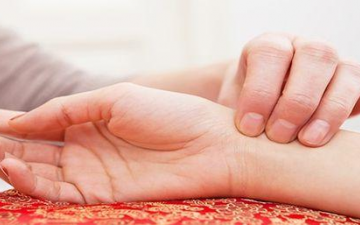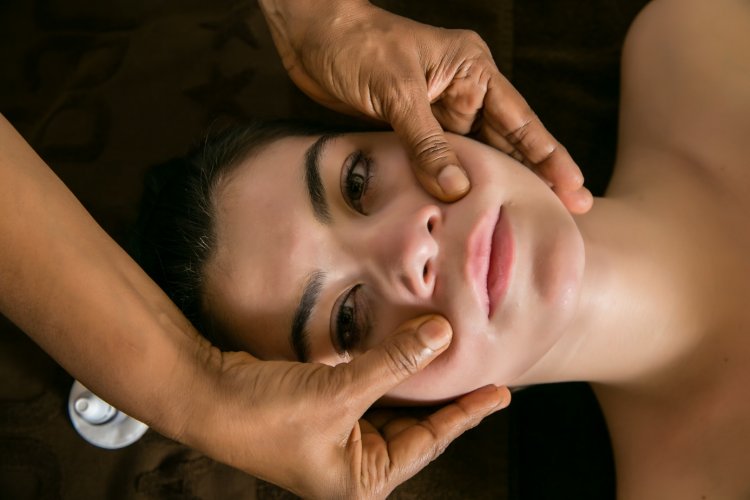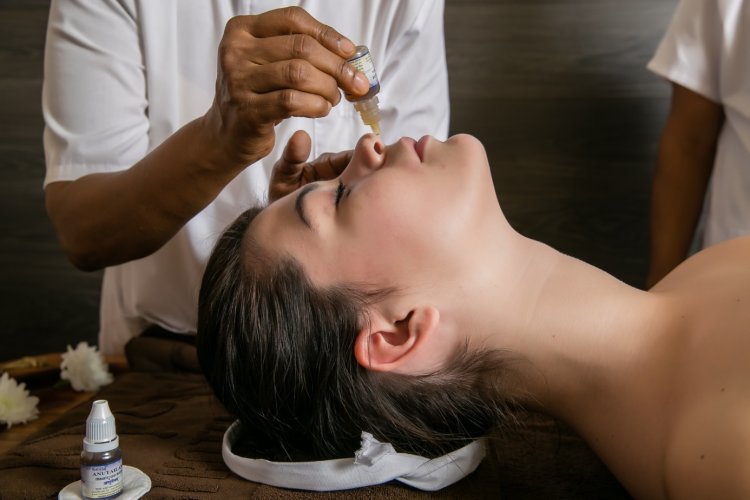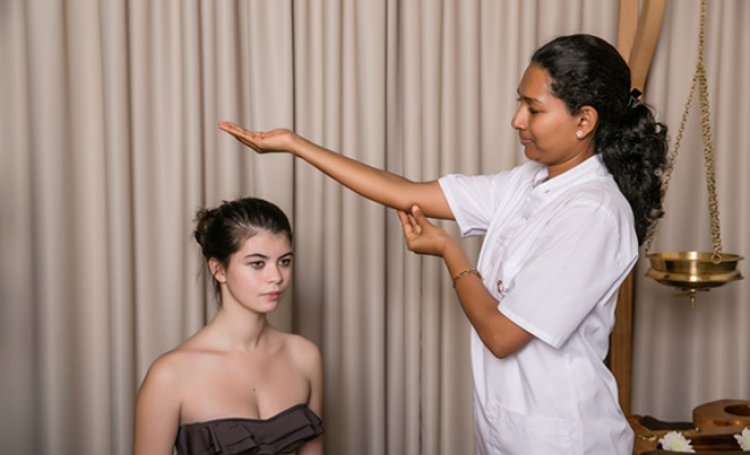In modern medicine, usually diagnosis means identifying the disease once it is already present. Medicine, as we know it, focuses solely on the physical problem and does not deal with the patient’s spiritual and mental state.
In contrast, however Ayurveda perceives man as an open, breathing book which must be carefully examined to understand the problem that causes discomfort.
According to the ancient holistic treatment system, if we do not feel well, that means there is an imbalance in our doshas. The discovery of the problem is a long and complicated process that involves defining our constitution (dosha), establishing the imbalance, and determining therapies to remedy this imbalance.
Fortunately, Ayurveda has very precise methods of detecting the imbalance before it appears, so preventive measures can be taken to prevent the disease from occurring.
 Ayurveda Diagnosis – Popular Methods
Ayurveda Diagnosis – Popular Methods
Pulse Diagnosis
Since time immemorial, Ayurvedic doctors have been very successful in diagnosing illnesses by resorting to a simple but very effective means … they just put the fingers of the patient’s hand and “read their pulse”.
By studying and reading the deep pulsations it is possible to determine not only the constitution of the body but also the state of the various organs. The way the blood pulsates into the veins can reveal information about the important meridians associated with the flow of prana energy in the body.
The flow of this energy circulates in the blood, passing through vital organs like the liver, kidneys, heart and brain. All the Ayurveda specialist needs to do is put their fingers on the wrist of the patient and, according to the rhythm of the pulse, to determine both their dosha and the possible health problem.
Tongue Diagnosis
Tongue is an organ through which we can feel the taste of food, and with which we can communicate with each other. It is an organ that can provide very important information not only for the physical but also for the patient’s mental health. The size, contours, surface and color of the tongue can give a lot of information to the Ayurveda specialist.
If the color of the tongue, for example, is pale, this is a sign of anemia, if it is yellowish, there are likely to be gallbladder or liver disorders, and if the coloration is bluish, heart problems are not excluded.

According to Ayurveda, the face is a mirror of the mind. Our face bears the marks of not only the years and the good or bad moments, but also the illnesses. Horizontal wrinkles on the forehead, for example, show deep hidden anxiety. The vertical line between the eyebrows to the right indicates that we suppress emotions that affect the liver and the vertical line between the eyebrows on the left indicates that the spleen is excited.
When the lower eyelids are full and puffy, this indicates problems with kidney work, changing the color around the nose or cheeks means that the body does not digest enough iron or folic acid or the digestive system is not working properly due to Agni lowering.
Ayurveda diagnosis on the lips
Similarly to the other parts of the body, the lips also reflect the health of the various organs. It is necessary to observe the size, shape, surface, color and outline of the lips.
If the lips are dry and rough – it means that the body is dehydrated. In case of anemia, the lips are pale.
As a result of chronic smoking, the lips get a brownish-black color, and if they have a lot of light brown spots, this indicates indigestion or parasites in the colon. In case of jaundice, the lips become yellow, and in the case of heart disease, due to lack of oxygen, they are bluish.
Nail Diagnosis
Ayurveda nail diagnosis involves careful examination of the size, strength, shape, surface and nail outlines.
Long white lines on the nails show poor digestion of the food in the digestive system and the transverse lines indicate poor nutrition or long neglected diseases.
Sometimes nails are protruding with impaired smoothness and this indicates problems with the heart and lungs. When the nails are slightly concave and resemble a spoon, this shows a lack of iron, and the white spots show a lack of zinc or calcium.
The pale nail color alerts to the presence of anemia. Excessive redness means there is an excess of red blood cells. If the nails are yellowish, it shows a weakness of the liver or jaundice, and blue nails speak again for a weak heart.

If the eyes are distant, this indicates poor thyroid function. If the eye conjunctiva is pale, it means anemia. If the conjunctiva is yellow, there is a weakness in the liver.
Observation of the iris is also of great importance. The small iris shows joint weakness. If there is a white circle around the iris, it indicates an excessive intake of salt or sugar.
In middle-aged, people this may also be a sign of stress. If the white ring is very visible and very white, it indicates degeneration of the joints and possible bone problems (initial form of discopathy, osteoporosis, stenosis, etc.). Brown – the dark points of the iris show stomach problems or bowel problems.
Marma Diagnosis
Marma diagnosis is not only one of the oldest diagnosis systems applied in Ayurveda, but it also provides some of the most accurate results during the examination. The review is done as the Vedic specialist carefully scrutinizes the Marma points to determine if there is a disease.
In addition to these basic diagnostic methods, Ayurveda also applies other methods of diagnostics such as urine, stool, sputum, sweat examination to identify and localize the imbalance in the doshas.
How does Ayurveda heal?

Again, we will compare the Indian holistic treatment system to modern medicine. While the second, after diagnosis, focuses solely on the treatment of the physical body and the sick organ by administering different pharmaceutical products, the Vedic treatment is done through various Ayurveda therapies aimed at rebalancing the patient’s doshas.
Therapies that are being applied are many and varied, but they all aim to purify the body and achieve a balance in the constitution.
Most often Ayurveda therapies are conducted in three phases
- The first phase aims to purify the body from all accumulated toxins and slags (including the accumulated negative emotions, stress, severe conditions in which a person falls after a heavy personal loss). Preparatory Ayurveda therapies usually include massages, exercises and yoga. Preparatory therapy is important because only after the body is completely cleansed and relaxed, it is possible to continue with the main therapy, called Panchakarma.
- Panchakarma consists of applying in a certain sequence of various purifying, detoxifying diets, relaxing saunas and healing massages.
Speaking of massage … In Ayurveda massages are one of the main Ayurveda therapies, used both for the treatment of various diseases as well as for complete toning and rejuvenation.
In Ayurveda, the massage is done from head to toe and uses various warmed herbal and vegetable oils (sesame, olive oil, brahmi, coconut, sweet almond, etc.), which have an extremely beneficial and rejuvenating effect on the body. Especially useful for the skin is the herb Brahmi, which Vedic specialists recommend taking in the form of herbal tablets.
- The third phase in Ayurveda treatment is meditation . This therapy is very useful for improving the mental balance, achieving inner peace and balance.
In addition to these main Ayurveda therapies, to strengthen the five senses and to achieve balance and harmony of the doshas Vedas recommend yoga, aromatherapy, color therapy and music therapy.


0 Comments